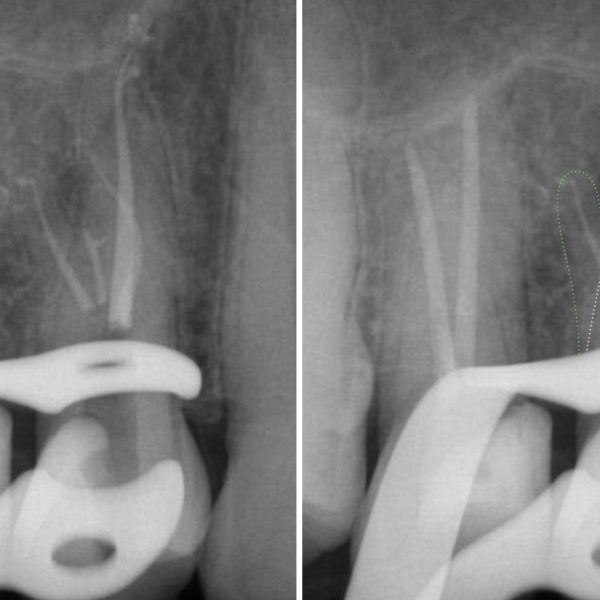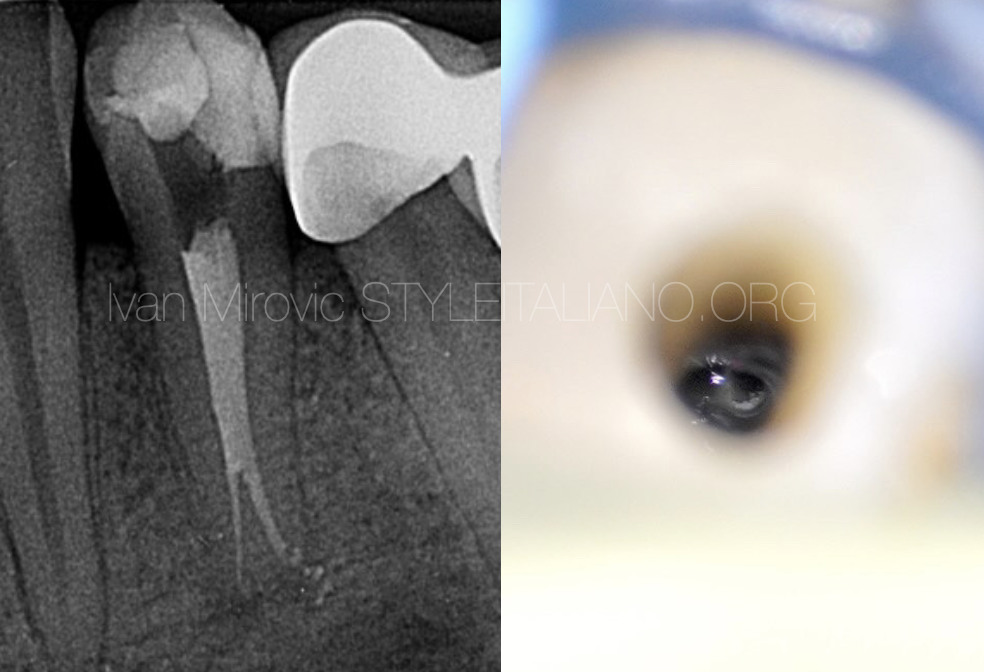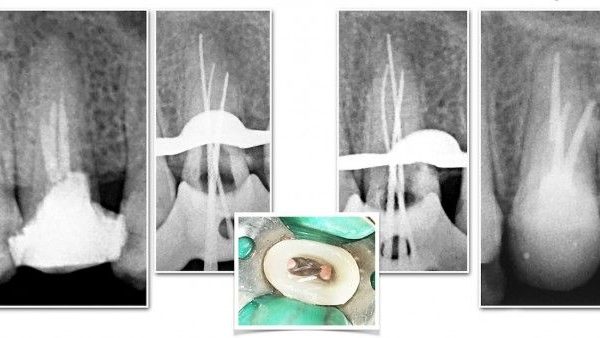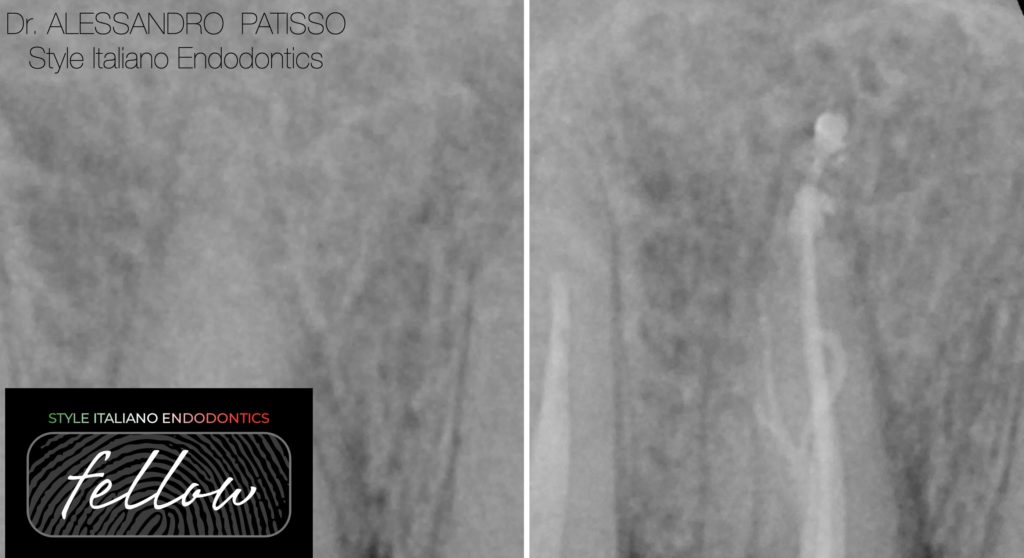
Management of maxillary first premolars with particular anatomies
13/12/2023
Fellow
Warning: Undefined variable $post in /var/www/vhosts/styleitaliano-endodontics.org/endodontics.styleitaliano.org/wp-content/plugins/oxygen/component-framework/components/classes/code-block.class.php(133) : eval()'d code on line 2
Warning: Attempt to read property "ID" on null in /var/www/vhosts/styleitaliano-endodontics.org/endodontics.styleitaliano.org/wp-content/plugins/oxygen/component-framework/components/classes/code-block.class.php(133) : eval()'d code on line 2
To obtain good results in endodontic treatment it is important to remove all microorganisms from root canal system, three dimensionally sealing and the placement of a good coronal seal to prevent communications between oral cavity and the periradicular tissues.
Preoperative radiograph identification, root canal access opening, intraoperative identification, location, instrumentation, debridement, disinfection, obturation are improtant for successful endodontic therapy.
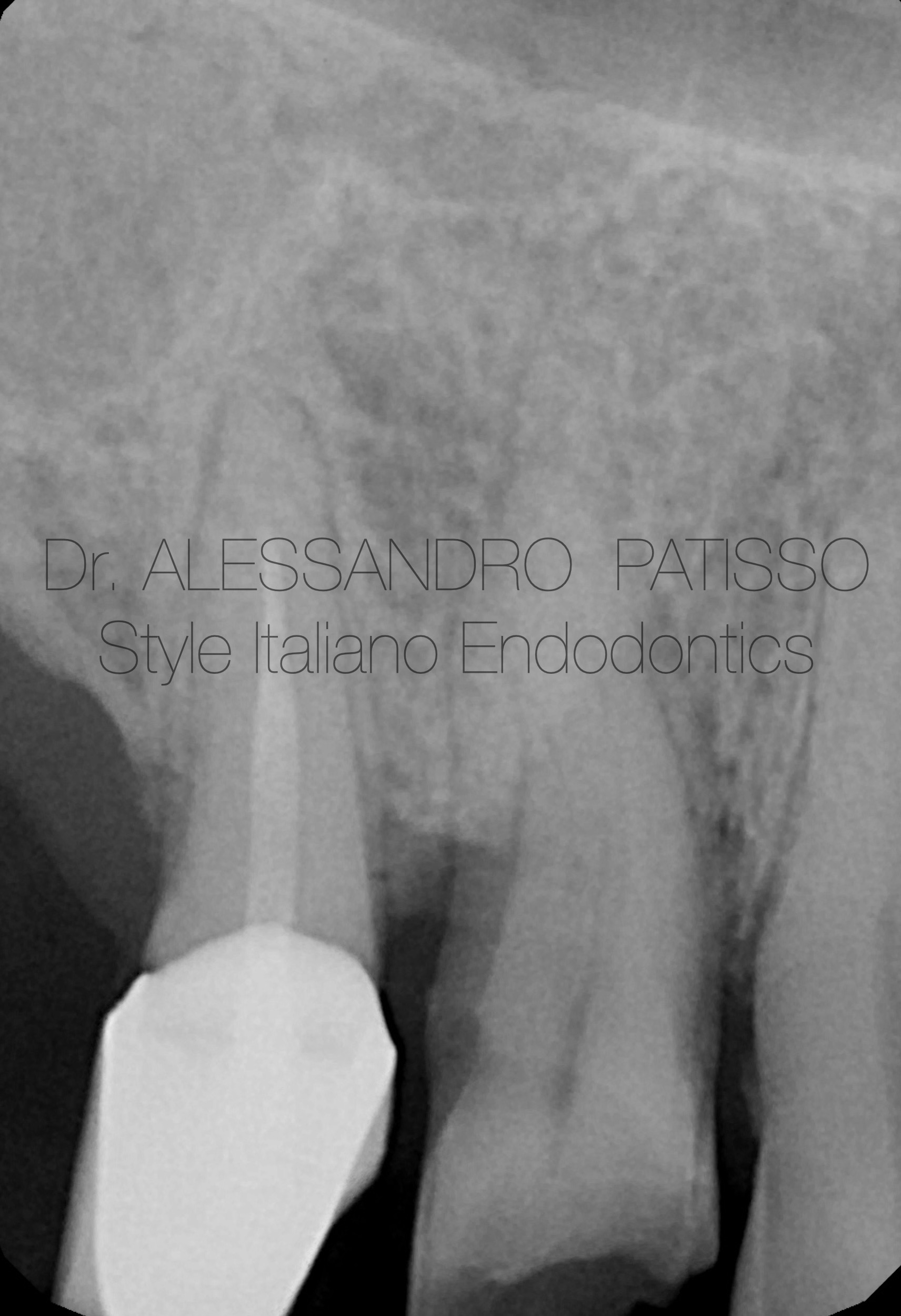
Fig. 1
Probing the canal with a manual file helps to define its anatomy, highlighting its complexity, preventing operator errors.
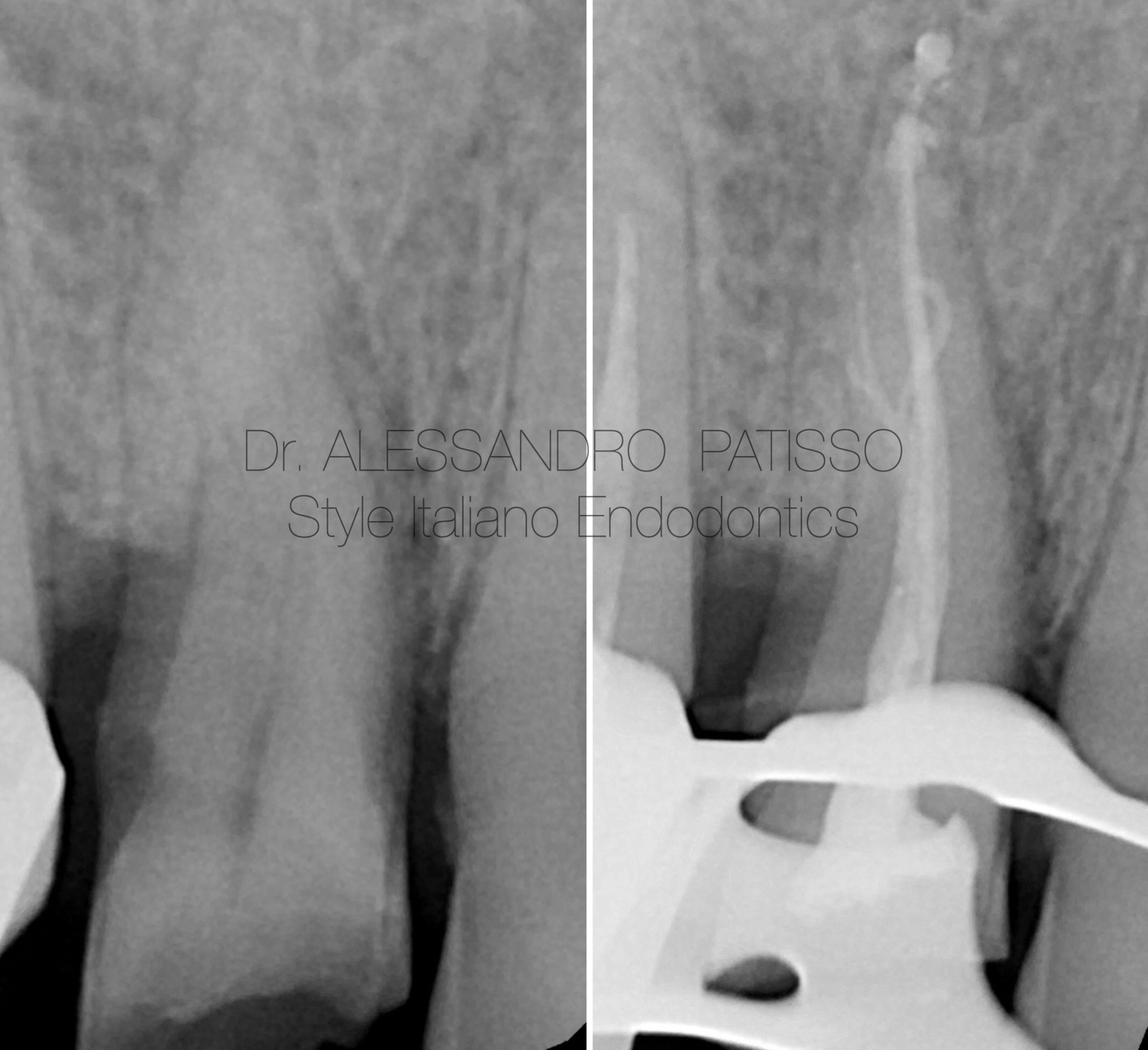
Fig. 2
One of the key factors in irrigation is not the efficacy of the solution it self, but the penetration in the apical portions, lateral canals, isthmuses and so on, where it can kill the bacteria and dissolve the tissues.
A three-dimensional obturation system: Coneless, allowed me to seal the entire root canal with the gutta percha.
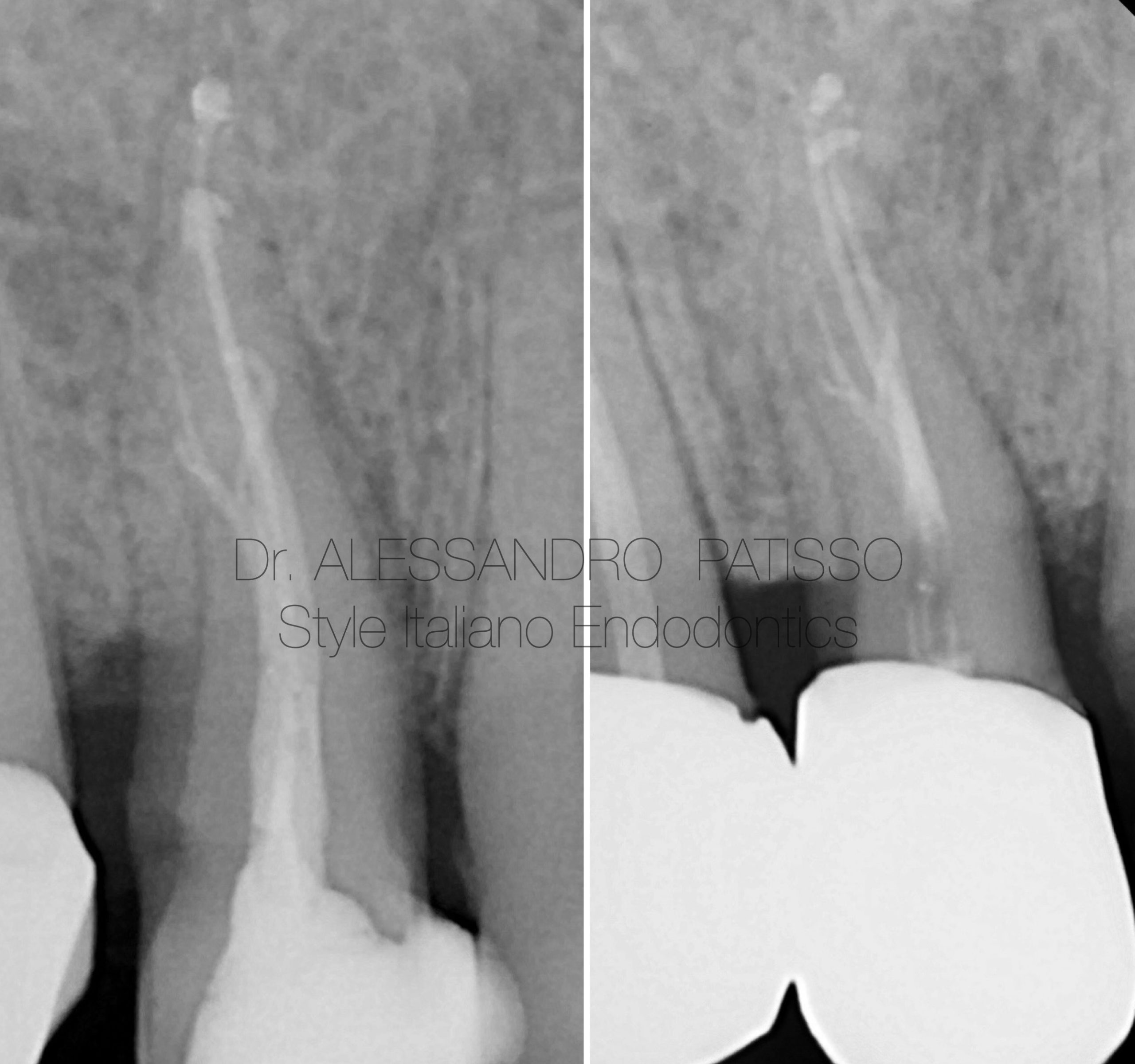
Fig. 3
Follow-up
2 years after reconstruction.

Fig. 4
Graduated in Dental Hygiene at the University of Bari in 2009 and Dentistry and Dental Prosthetics at the Universidad Europea de Madrid in 2015.
From the beginning he has practiced exclusively Clinical Edodontics, perfecting himself through numerous courses around Italy. Among the most recent he attended the courses of Dr Giuseppe Carrieri, finishing first in the course.
Today he works as a freelancer using only the microscope. Tutor in the courses of Dr Giuseppe Carrieri Fellows member Styleitaliano Endodontics.
Conclusions
In cases where the root anatomy is complex, the use of the microscope associated with adequate instruments is essential to achieve a good result without running the risk of making serious errors, therefore we may have to have CBCT to estimate the situation .
Bibliography
- Bergenholtz G. Micro-organisms from necrotic pulp of traumatized teeth. Odontol Revy. 1974;25(4):347-58.
- Sjögren U, Figdor D, Persson S, Sundqvist G. Influence of infection at the time of root filling on the outcome of endodontic treatment of teeth with apical periodontitis. Int Endod J. 1997;30:297306.Vertucci FJ. Root canal Vertucci FJ. Root canal morphology and its relationship to endodontic procedures. Endod Topics. 2005;10:23–9.
- Kakehashi S, Stanley HR, Fitzgerald RJ. The effects of surgical exposures of dental pulps in germ-free and conventional laboratory rats. Oral Surg Oral Med Oral Pathol 1965 20(3):340-49.
- Association of Endodontists. Glossary of Endodontic Terms, 8th ed. Chicago: American Association of Endodontists; 2012.
- Siqueira JF, Barnett F. Interappointment pain: mechanisms, diagnosis, and treatment. Endodontic Topics 2004, 7, 93109
- Bugea, C.; Pontoriero, D.I.K.; Rosenberg, G.; Suardi, G.M.G.; Calabria, G.; Pedullà, E.; La Rosa, G.R.M.; Sforza, F.; Scarano, A.; Luongo, R.; et al. Maxillary Premolars with Four Canals: Case Series. Bioengineering 2022, 9, 757. https://doi.org/10.3390/ bioengineering9120757


